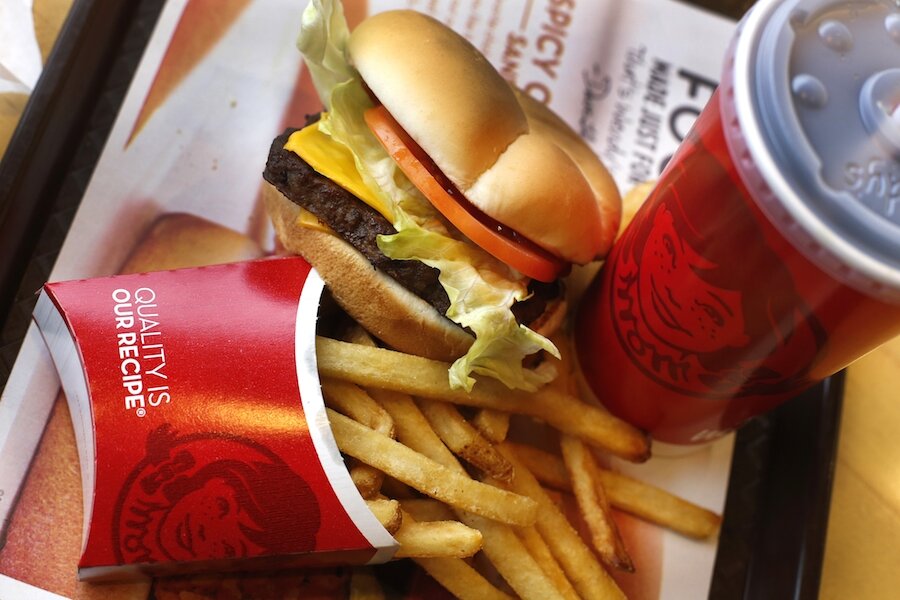Wendy's, McDonald's, and other chains struggle to balance quality and value
Loading...
Income disparity is one of our most important but least-discussed chronic problems. As the NPD Group noted last September, “The gap between high- and low-income groups is the widest it has been in 100 years, and the share of U.S. consumers who identify with the middle class has never been lower. Like other retail sectors, the restaurant industry is feeling the effects of this cultural and economic phenomenon…Low-income consumers, who are heavier users of quick service restaurants, were most adversely affected by the Great Recession and have less discretionary income to spend on dining out.”
Wendy’s CEO Emil Brolick didn’t reference income disparity by name, but he faced up to the issue in discussing Wendy’s Q2 earnings with analysts this morning. The brand’s numbers are decent: North America same-store sales up 2.4% at company stores and 2.2% at franchised stores (although how much of that was from price increases wasn’t disclosed). Company margins are up 40 basis points to 18.2%. Brolick said the Jalapeňo Fresco Spicy Chicken and Ghost Fries LTO launched in April did well even though at $4.99 the sandwich was priced 60¢ above Wendy’s core chicken sandwiches. Ghost Fries were a premium item as well at $1.99.
But Brolick is sharp enough to recognize a problem. “We feel quite good about our core and LTO products while price/value still requires refinement. Finding a consistent price/value message that drives sales, customer counts and profits is our opportunity,” said Brolick, putting his usual bright-side spin on it. “We know our Right Price Right Size menu alone is not a sufficient value proposition to consistently attract the value-seeking consumer. So we have testing various value bundles and we are gaining important insights moving us closer to a solution. We expect to see this pay off later in the fourth quarter of this year.”
In answer to an analyst’s question Brolick got to the meat of the matter, saying “There are heavy users of QSRs who don’t have a lot of disposable income.” He cited data that finds 26% to 28% of QSR customers say their last meal was a value purchase.
Brolick says Wendy’s sees a consumer shift in favor of “relevant bundled meals in the $4 to $6 check range.” These are not customers who bought Jalapeňo Fresco meals, which Brolick conceded could approach $10 depending on add-ons.
So the problem for those QSRs who care about the value tier (Jack in the Box unapologetically ignores low-end price battles and has no budget menu) is to balance the desires to sell premium items to those with more disposable income and to satisfy lower-income diners with budget buys. As Brolick indicated, traditional “value meal” menus aren’t enough.
Daniel Schwartz, CEO of Burger King parent Restaurant Brands International, recently pledged to analysts that, “You are going to see us having good value and good premium products for our guests every quarter, every year. That’s what our industry is all about.” But it has given little national marketing support to the King Deals breakfast/lunch menu since it was launched last year, preferring to promote “2 for $5” deals.
The value/premium balancing act is one of the many problems McDonald’s Corp. CEO Steve Easterbrook says his chain confronting. During last month’s Q2 earnings call, Easterbrook said, “Having aligned with our franchisees on the need for national price point value platform, we are now making adjustments to our current offer for the rest of the summer. This includes better marketing support and stronger coordination with local messages. We are also evaluating options for longer-term national value platform.”
That summer program has been a series of $2.50 bundles of small fries plus a sandwich (such as a Double Cheeseburger or Filet-O-Fish). With a drink, those meals fit within or below the $4-$6 meal range. But the summer promotion is simply an indication that, like Wendy’s Right Price value menu, McDonald’s Dollar Menu & More with its a la carte selections instead of bundled meals isn’t an attractive enough proposition for value diners now.
That’s why both McDonald’s and Wendy’s are testing new value platforms. McDonald’s has a fully realized option that it has been testing since June. As BurgerBusiness reported earlier and first, McDonald’s is testing its “Lovin’ Value Menu” has a better value offer than the current summer deals. As testing, diners can get a “Signature Burger Mini Meal” for $3.99. It includes a new double-patty Signature Burger or Signature Chicken with small fries and soft drink. Other “mini meals” include a McDouble ($3.99), Cheeseburger ($2.99), Double Cheeseburger ($3.49) or McChicken ($2.99).
QSRs are losing customer traffic at the low end, not just at the top to fast casuals. Finding a value platform that provides what value-sensitive customers want can make or break a turnaround.








